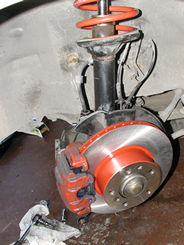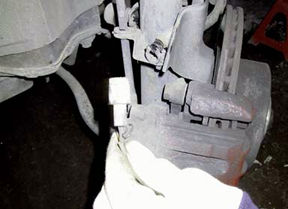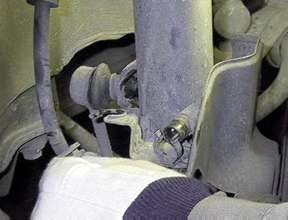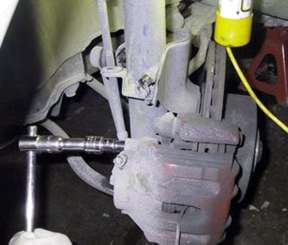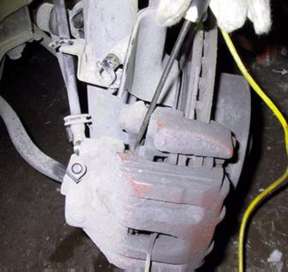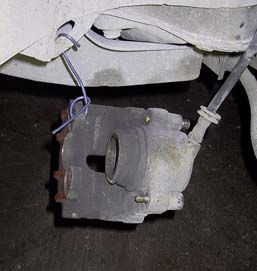|
7. Remove some fluid from the brake reservoir if this one is toped
up (pressing the piston will displace fluid back into the reservoir).
8. Remove the old pads then using a piece of wood or rag to protect
the piston, clean the caliper first then compress the caliper piston
with a channel-lock pliers.
Using a C-Clamp and a flattened tin can spreads the pressure across
the entire caliper piston, reducing the chance of pressing it back
in funny.
9. It is a good time to check the caliper for leaks or piston that
slide roughly.
10. You may want to apply some anti-squeak brake pad product at
the back of the new pads. Insert the wear sensor on the new pad.
11. Installation is reverse of removal. Don't forget to push the
caliper bolts all the way to the back before installing it, else
the bolts will rest on top of the caliper carrier and you will not
be able to install the caliper.
12. Depress the brake pedal several times to adjust the caliper
and pads.
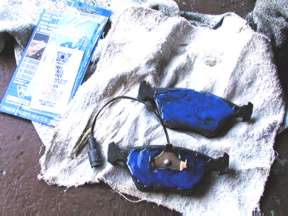
Tip from Todd G.: Use a 6" adjustable
C-clamp to reset the piston before you remove the caliper
bolts. This will make removing the caliper & spring much
easier, not to mention, no bleeding fingers from a slipping
channel lock.
You can also buy a tool to reset the piston
at your local auto part store.
|
